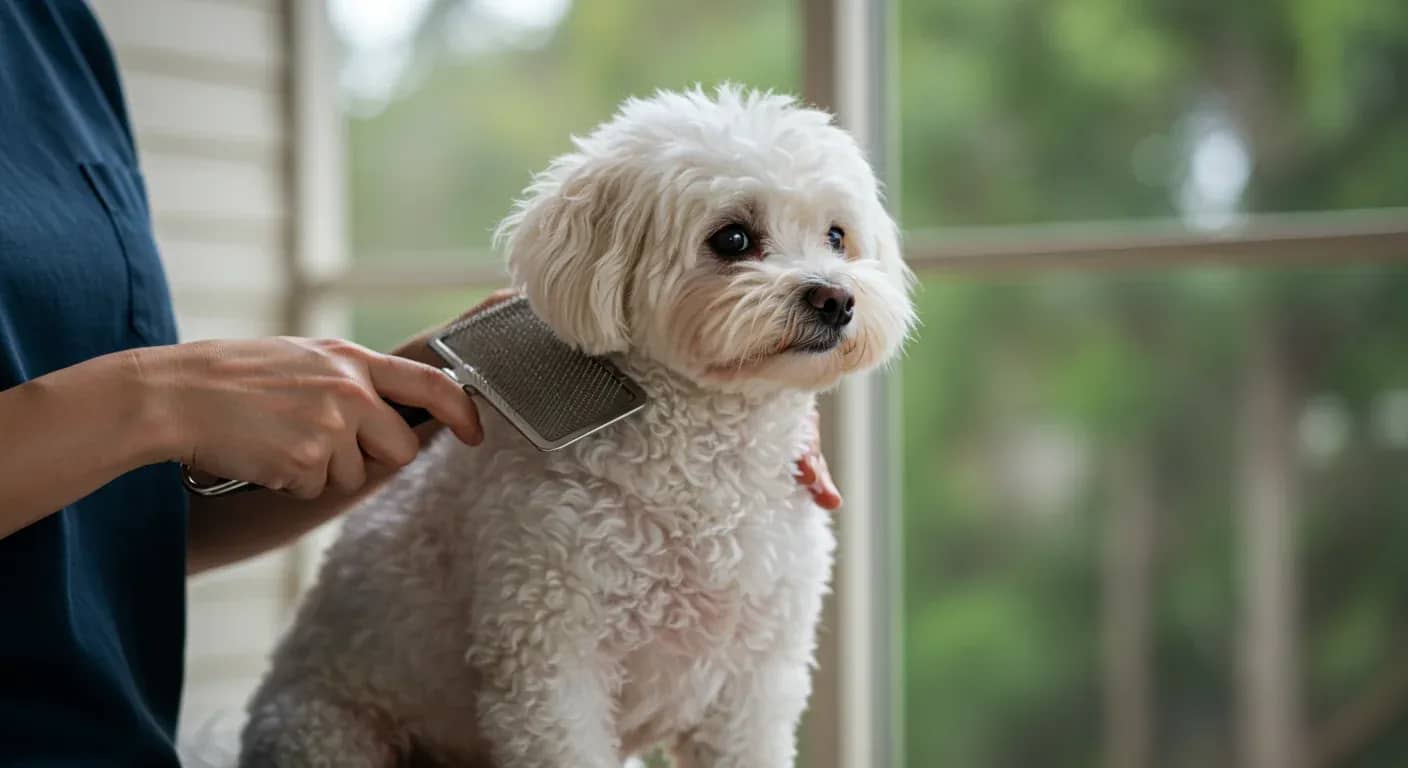At a glance
- German Shepherds need ear cleaning about once monthly for routine maintenance, or every 1-2 weeks if prone to infections
- Their upright ears are less moisture-prone than floppy breeds, but outdoor activity and allergies can still cause problems
- Use gentle, pH-balanced ear cleaners designed for dogs, avoiding alcohol-based products or cotton swabs
- Watch for redness, odour, discharge, or excessive scratching as signs of infection requiring veterinary attention
Understanding your dog's ear anatomy
You might notice that your German Shepherd's ears seem less problematic than your neighbour's Cocker Spaniel or Basset Hound. There's a good reason for this observation. Those distinctive upright, triangular ears that make the breed so recognisable also provide natural advantages for ear health.
The erect ear structure allows better air circulation compared to floppy-eared breeds, reducing moisture retention that often leads to bacterial and fungal infections. However, this doesn't mean these dogs are immune to ear problems. Their large ear openings can collect debris during outdoor adventures, and dogs prone to allergies may still develop wax buildup or infections regardless of ear shape.
Many German Shepherds show increased ear sensitivity during allergy seasons or after swimming and bathing. The key is understanding when normal ear maintenance becomes necessary intervention.
How often cleaning is actually needed
When it comes to ear cleaning frequency, context matters more than rigid schedules. Research shows that healthy German Shepherd ears typically benefit from cleaning about once monthly for routine maintenance. This frequency prevents excessive wax buildup without over-cleaning, which can actually irritate the delicate ear canal.
However, some dogs need more frequent attention. If your dog swims regularly, suffers from allergies, or has a history of ear infections, cleaning every 1-2 weeks helps prevent moisture-related problems. During active treatment for ear infections, your veterinarian may recommend daily cleaning until the condition resolves.
Over-cleaning healthy ears disrupts the natural balance of oils and beneficial bacteria, potentially creating more problems than it solves. Watch your dog's individual patterns rather than following a strict calendar schedule.
Choosing the right products and tools
Have you wondered why some ear cleaners work better than others? The difference lies in formulation and pH balance. Effective ear cleaners for German Shepherds should remove debris and excessive wax while preventing microbial growth, all without causing irritation.
Look for products specifically designed for dogs that dry the ear canal to reduce moisture buildup. Avoid cleaners containing alcohol or hydrogen peroxide, as these can irritate sensitive ear tissue. Research indicates that gentle, pH-balanced formulations work most effectively for regular maintenance.
Top Performance ProEar Cleansing Pads offer convenient options for quick cleaning after outdoor activities, typically costing around $10-15 per pack. Liquid ear cleaning solutions provide deeper cleaning for routine maintenance, with most quality products ranging from $10 to $25 per bottle.
Essential supplies include the ear cleaner solution, cotton balls or gauze pads (use fresh ones for each ear), and high-value treats to create positive associations. Never use cotton swabs or sharp objects, which can push debris deeper or damage the ear canal.
Step-by-step cleaning technique

Timing makes all the difference in successful ear cleaning. Choose moments when your dog feels relaxed or slightly tired, perhaps after a walk or play session. Gather all supplies beforehand to avoid interruptions that might increase anxiety.
Start by offering treats and speaking in soothing tones to create positive associations. For routine cleaning, moisten a cotton ball or gauze with ear cleaner and gently wipe the outer ear and visible ear folds. Never insert anything deep into the ear canal.
For more thorough cleaning, place a small amount of ear cleaner into the ear canal, then gently massage the base of the ear to loosen debris. Your dog will naturally want to shake their head, which helps distribute the cleaner and bring debris to the surface. After head shaking, use fresh cotton balls to wipe out loosened material, working from inside to outside.
Repeat the process until cotton balls come out clean, then thoroughly dry the ear to prevent moisture buildup. Most dogs tolerate this process well when introduced gradually with plenty of positive reinforcement.
Creating a stress-free experience
Many German Shepherd owners worry about their dog's reaction to ear handling, especially if previous experiences were unpleasant. The key lies in building positive associations gradually rather than rushing through the process.
Perform ear cleaning in familiar, quiet spaces like bathrooms or mudrooms where you can easily contain any mess from head shaking. Keep initial sessions short and positive, stopping if your dog shows signs of pain or excessive distress.
Use treats liberally throughout the process, not just at the end. Some dogs respond well to puzzle toys or lick mats during cleaning, which provide distraction and positive focus. If your dog remains anxious after several attempts, consult your veterinarian about techniques or products that might help.
Recognising when problems develop

Sometimes the signs of ear problems develop gradually, making them easy to miss during routine grooming. Watch for redness or swelling inside the ear, which often appears before other symptoms become obvious.
Excessive scratching at the ears or frequent head shaking typically indicates discomfort, even when ears appear normal on casual inspection. Discharge of any colour or consistency, along with foul odours, suggests bacterial or fungal infections requiring veterinary attention.
Increased wax buildup beyond normal levels, or changes in wax colour and consistency, can signal developing problems. Dogs experiencing ear pain often show reluctance to have their heads touched or may tilt their heads persistently to one side.
If any of these signs appear, consult your veterinarian promptly rather than attempting to treat the condition yourself. They may prescribe medicated ear cleaners, antibiotics, or antifungal treatments along with specific guidance on cleaning frequency during treatment.
Long-term ear health maintenance
Research tells us that consistent, gentle maintenance prevents most ear problems in healthy dogs. Regular inspection during grooming sessions helps catch issues early, when they're most treatable and least uncomfortable for your dog.
Keep ears dry after swimming or bathing by gently toweling the outer ear area. During allergy seasons, you might notice increased wax production or sensitivity, which may require temporarily increased cleaning frequency.
Quality ear cleaning products represent a small investment in your dog's comfort and health. Most owners find that establishing a routine early in their dog's life makes the process easier and more effective long-term. Always consult your veterinarian for personalised advice, especially if your dog shows signs of ear discomfort or develops recurring infections.



